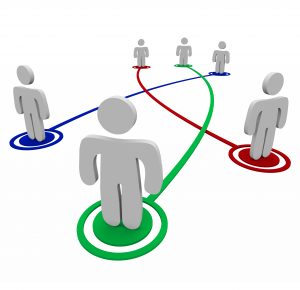For IoT companies to grow, they need to focus on more than just increasing their sales and marketing activity.
To really grow – in revenue, profits and influence – IoT companies must look to customer success and customer support. Support, in particular, must go from being a cost center to a profit center.
In our work supporting the growing consumer IoT industry, we’ve found that service and support can be an important driver for IoT startup growth, if not the most important driver.
In fact we’ve identified four specific levers of growth for consumer IoT companies that support operations can impact.
Retention
The first and most important growth lever is retention. Retention is the goal of any serious customer support effort. According to the Harvard Business Review, reducing customer churn (customers who leave a brand) by 5% can boost profits from 25% to 85%.
Everything you do in your support operation should be geared to making sure your customers stay with you.
But why is retention so important?
It’s all about the math. The more you reduce customer defections, the more profitable you’ll be.
Let’s take an important measure of customer value, Customer Lifetime Value (CLV). If a customer is valued at $100 a month, and stays with you for a year, their value to your company is $1,200. But if you convince them to stay with you three years, that customer will be worth $3,600, tripling their value to your company.
With IoT products the key to long-term customer satisfaction is a great customer experience, and that starts with how you “on-board” new users, especially since these products are so innovative and technology-driven. Your customers need to understand the ins and outs of how to setup your product and everything they can do with it.
There are a number of ways you can excel at this initial step of the customer journey, which will impact your retention rates later: provide clear onboarding information via your website (how to set up the hardware, configure the mobile app, integrate with Alexa, describe most common use cases), or through an email series, or even an onboarding phone call with a support rep if that’s what it takes.
Once you’ve ensured they can use the product and understand what the product can do and bow to use it, they’ll have questions, challenges and issues along the way. Your customer support team needs to be there to answer those questions and get your customers unstuck so they can continue to have a great experience.
To this end, meet your customers where they are. Cover all the channels they might expect to receive support through: email, chat, and phone especially. And make sure no calls or requests fall through the cracks – answer any support tickets as quickly as possible, within seconds for phone calls and chat, and within a couple of hours for e-mails.
The bottom line is, excellent support is table stakes for any company today, especially for consumer IoT and consumer electronics companies. The bar has been set higher for service, so the better you service your customers, the more likely they are to stick around.
Revenue Expansion
Revenue Expansion is the second and newest growth lever, and it should be a key growth driver for IoT companies.
Once you have a customer that has purchased a $300 product from you, what should you do so that they not only stick around longer, but buy more?
IoT products have a built-in advantage here. They’re constantly evolving: adding new features and functionalities, attaching subscriptions to their products (such as for storing data or providing advanced analytics), releasing new versions, introducing complementary new products.
You need to find a way to keep offering your customers additional value, as their use cases evolve.
This isn’t just retention, this is expansion.

And your customer support reps are in the best position to do this cross-selling and upselling. They frequently know your customers the best, their home environment, home office or small business. They are uniquely suited to identify opportunities to present customers with options to upgrade or complement what they already have.
Theirs is a consultative sale, because they know that due to some life event or use case the customer would be better served with the new accessory that integrates with the latest version of the product. This is not about pushing product. It’s about delivering value, and helping your customers through a buying experience that makes sense to them and responds to their needs.
Let’s take another look at the Lifetime Customer Value calculation we used earlier. Say we can increase retention to three years, and the customer’s value to your company goes from $1,200 to $3,600.
If you can expand your relationship with that customer and get them to expand what they get with you, you could boost the $100 a month relationship into a $150 or $200 a month. The CLV of those customers could go to $7,200!
Referrals

The third growth lever for IoT companies is referrals. Happy customers make great salespeople. It’s not just you saying great stuff about your products (prospects are always suspicious of self-promotion), these are happy customers talking wonders about you.
This is gold.
Customers who recommend you to their friends, family and colleagues become an inexpensive sales channel for your organization, especially when compared to advertising, content marketing, PR blitzes and other types of paid promotion.
To make referrals more consistent there are simple programs you can institute, programs that reward customers who refer new business to you. You can give them points, deliver coupons, or give discounts for their next purchase.
Find a great way to kick-off a referral process early on in your company’s existence.
Partnerships
Partnerships, the fourth lever, are a little different from the previous three levers, and not necessarily tied to your support operations. The nature of IoT products makes partnerships a logical source of new business, since the IoT ecosystem provides a ready cadre of partners.
Smart homes are becoming a hodge-podge of brands – often competing brands – that make up the whole. All products must work together, providing built-in opportunities to create referral partnerships. Your customer success and support team can provide unique insights on this, since they’re the ones on the trenches dealing directly with customers.

What kind of co-marketing program can you forge with other manufacturers in your ecosystem? Can a smart lock manufacturer form an alliance with a smart tracker manufacturer and a smart lamp vendor for mutual referrals?
Keep an open mind to what could be a potential competitor and think about how to turn them into a collaborator.
This isn’t a strict IoT example per se, but I was at Best Buy recently where I saw a complete Amazon showroom. Best buy used to be Amazon’s mortal enemy! But they have now become one of Amazon’s channel partners.
Which competitor can you forge a mutually beneficial referral relationship with?
Conclusion
Sales and marketing plays a huge role in getting the word out about your IoT brand. But look at your market growth strategy as more of a “land and expand” strategy than your prime growth strategy.
Sales and marketing gets your foot in the door by “landing” an initial client. Then customer success and support take over to retain, expand and facilitate referrals. Lastly, think about partnerships as yet another way of “expanding” your footprint within the market.
The sooner you can shift your thinking to see support and service as your most important growth lever, the sooner you can become a market leader.




